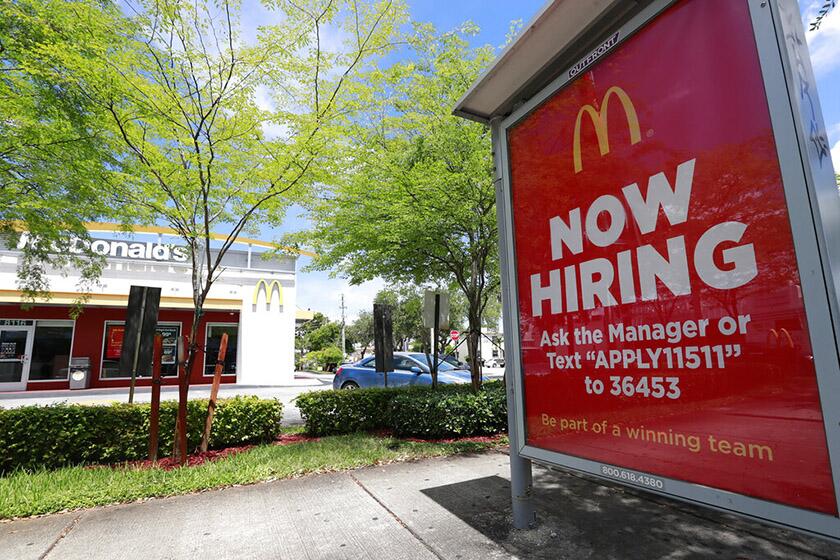U.S. Retail Sales Rise 0.2% in August
U.S. retail sales grew at a subdued pace last month because of low prices and sluggish business at auto dealers. Still, there are few indications consumer spending is about to evaporate.
August sales rose 0.2%--less than the 0.5% expected gain--after declining 0.6% in July, Commerce Department figures showed Tuesday. When autos are excluded, retail sales rose 0.3% last month after rising 0.6% in July.
That suggests there’s “no falling off a cliff,” said John Ryding, a senior economist at Bear Stearns & Co. in New York, as job and income growth keep consumers spending, if at a slower pace than earlier in the year.
Third-quarter consumer spending will probably cool to a 2% annual growth rate, about a third of the 5.9% pace recorded during the prior three months, said Christopher Low, chief economist at First Tennessee Capital Markets in New York.
Restraining the overall sales figure was a 0.2% dip in car sales, which surprised some analysts who thought car purchases would roar back after the settlement of the General Motors Corp. strike.
The eight-week strike during July and August depleted the supply of available vehicles on dealers’ lots and sent car sales plummeting by 4.1% in July. Price cuts and rebates at auto dealers were also cited as reasons for the sales decline.
Although economists attributed the weaker-than-expected pace of August sales to the recent turbulence in the stock market, consumers appear to be only slightly holding back on purchases.
“Generally, people are turning a bit more cautious for obvious reasons because of the recent financial developments,” said Wayne Ayers, chief economist at BankBoston. He added that car sales might also be slowing because, nearly eight years into the current economic expansion, much of the demand has already been satisfied.
By category, big-ticket goods, including autos, appliances and furniture, were unchanged in August. Orders for nondurable goods, ranging from groceries to clothing, rose 0.3% for the month. Sales at furniture and home furnishing stores increased 1.05%, and sales of building materials and hardware fell 0.5% in August.
Apparel and accessories store sales rose 1.2% in August, after rising 1.3% a month earlier. General merchandise and food stores rose 0.3% and 0.4%, respectively. Sales at drugstores rose 1.1%.
But for the most part retailers have reported vigorous sales this year.
Pier 1 Imports, for instance, “continues to benefit from a strong U.S. economy,” said Marvin J. Girouard, president and chief executive of the imported decorative home furnishings retailer. Second-quarter sales at the company rose 9.1% from the same three months last year.
At Best Buy Co., the biggest U.S. electronics retailer, second-quarter earnings doubled forecasts because of strong sales of televisions, camcorders and entertainment software, the company said Sept. 3. Total sales at Best Buy’s 289 stores rose 22% to $2.2 billion.
The Standard & Poor’s retail stores composite index, a gauge of the performance of 36 retail companies listed in the S&P; 500, has gained more than 18% so far this year. The strength of the index, which includes such companies as Home Depot Inc., Circuit City, Sears Roebuck and Wal-Mart Stores, is a reflection of the consumer appetite for goods that has characterized the economy this year.
At the same time, companies have had difficulty raising prices on the merchandise they sell as the cost of imported goods keeps declining and because consumers simply take their business elsewhere.
More to Read
Inside the business of entertainment
The Wide Shot brings you news, analysis and insights on everything from streaming wars to production — and what it all means for the future.
You may occasionally receive promotional content from the Los Angeles Times.










